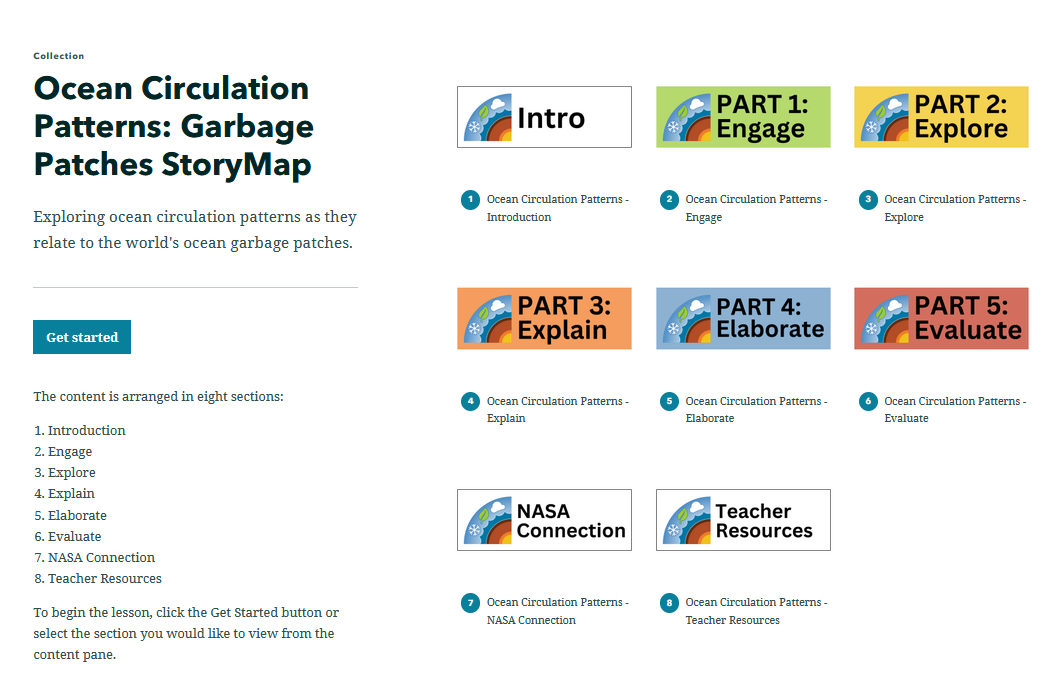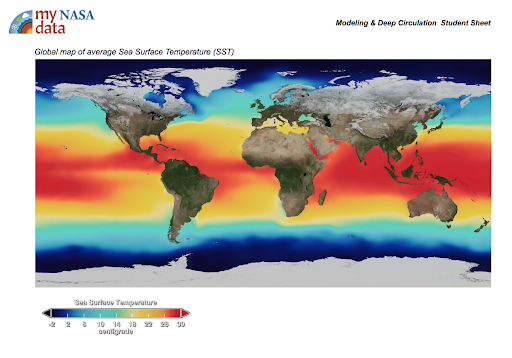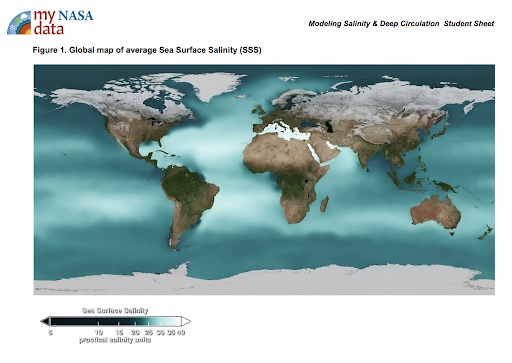Interactive Models
Ocean Circulation Patterns: Garbage Patches StoryMap
Overview
Using various visualizations (i.e., images, charts, and graphs), students will explore ocean circulation patterns as they relate to the world's ocean garbage patches using NASA ocean currents data. Students will investigate the forces that contribute to ocean circulation patterns, and how debris, especially plastics, travel from land to garbage patches. Students will also analyze regional plastic production and waste management data to describe how humans have contributed to ocean plastic pollution. This StoryMap is intended to be used with students who have access to the internet in a 1:1 or 1:2 setting.

Materials Required
Resources Needed Per Student:
- Student Sheet
- Computer/Tablet
- Internet Access
- Link to Ocean Circulation Patterns StoryMap
Directions
- Using an internet accessible device, students open the link to the Ocean Circulation Patterns StoryMap to begin their exploration of this phenomenon.
- Distribute the Ocean Circulation Patterns StoryMap Student Sheet. Have students navigate on their own through the Engage, Explore, Explain, Elaborate, and Evaluate tabs of the story map to answer the questions and complete the activities on their student sheet.
Teacher Note
Ocean currents are masses of water in motion that circulate the water and all that’s in it. Driven by wind and other forces, currents on the ocean surface cover our planet. Some span hundreds to thousands of miles across vast ocean basins in well-defined flows. Others are confined to particular regions and form slow-moving, circular pools. Seen from space, the circulating waters offer a study in both chaos and order.
To learn more, visit:
- The Ocean Circulation Phenomena page for background information
Teachers who are interested in receiving the answer key, please complete the Teacher Key Request and Verification Form. We verify that requestors are teachers prior to sending access to the answer keys as we’ve had many students try to pass as teachers to gain access.
Disciplinary Core Ideas:
- PS1A: Structure and Properties of Matter
- ESS2A: Earth Materials and Systems
- ESS3C: Human Impacts on Earth Systems
Crosscutting Concepts:
- Patterns
- Systems and System Models
Science and Engineering Practices:
- Developing and Using Models
- Analyzing and Interpreting Data
- Students will analyze and compare multiple variables of the Earth System as they analyze ocean circulation patterns.
- Students will investigate the relationship between ocean circulation patterns and garbage patches.
- Students will investigate the forces that contribute to ocean circulation patterns.
- Students will model their understanding of the Earth System interactions that contribute plastics on land to ocean garbage patches.
- What are garbage patches and how are they formed?
- What forces within the Earth System contribute to ocean circulation patterns?
- What conditions within the Earth System allow plastic on land to be transported to ocean garbage patches?
National Geography Standards:
- How to use maps and other geographic representations, tools, and technologies to acquire, process, and report information from a spatial perspective.
- Internet Required
- One-to-a-Group







